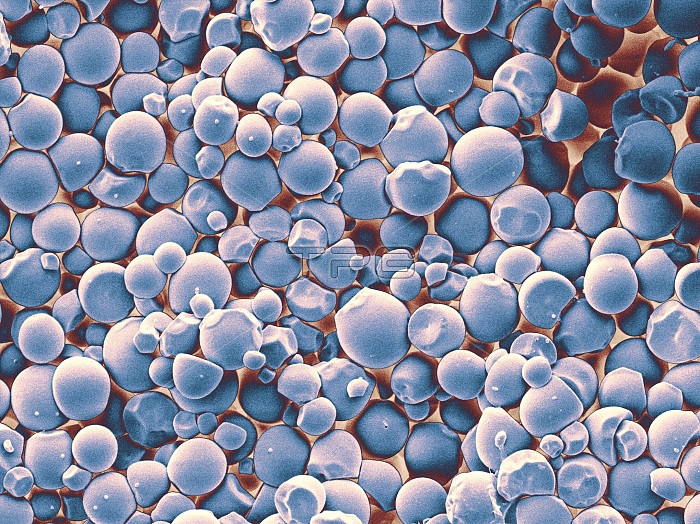
Starch grains isolated from cassava (manioc, casava, or yuca - Manihot esculenta) tubers. Their flesh can be chalk-white or yellowish. Cassava roots are very rich in starch, and contain significant amounts of calcium (50 mg/100g), phosphorus (40 mg/100g) and vitamin C (25 mg/100g). However, people economically dependent on cassava risk chronic poisoning diseases, such as tropical ataxic neuropathy (TAN), or such malnutrition diseases as kwashiorkor and endemic goitre. The leaves cannot be consumed raw since they contain free and bound cyanogenic glucosides which are converted to cyanide in the presence of linamarase, a naturally occurring enzyme in cassava. Cassava roots are eaten raw everywhere in Africa except bitter cassava, which has toxic tubers. Soaking and cooking kill the toxic substances contained in this vegetable. Cassava starch is the base of tapioca. Enhanced SEM. Image width: 160 micrometers. Magnification: 625x if the image is printed 10 cm wide.
| px | px | dpi | = | cm | x | cm | = | MB |
Details
Creative#:
TOP22225192
Source:
達志影像
Authorization Type:
RM
Release Information:
須由TPG 完整授權
Model Release:
N/A
Property Release:
No
Right to Privacy:
No
Same folder images:

 Loading
Loading